Isuru S. Godage
Study on Soft Robotic Pinniped Locomotion
Apr 14, 2023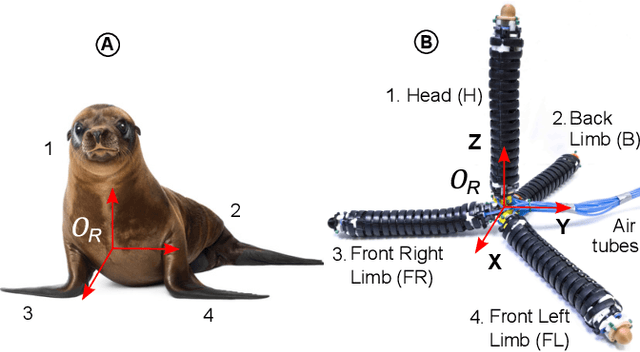
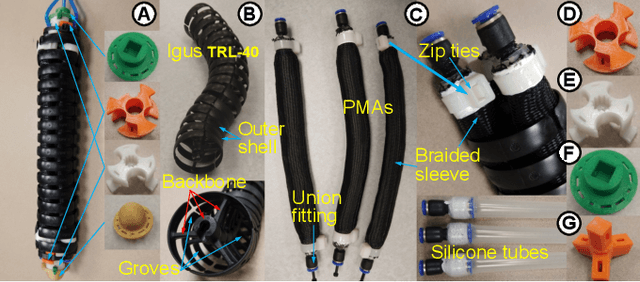
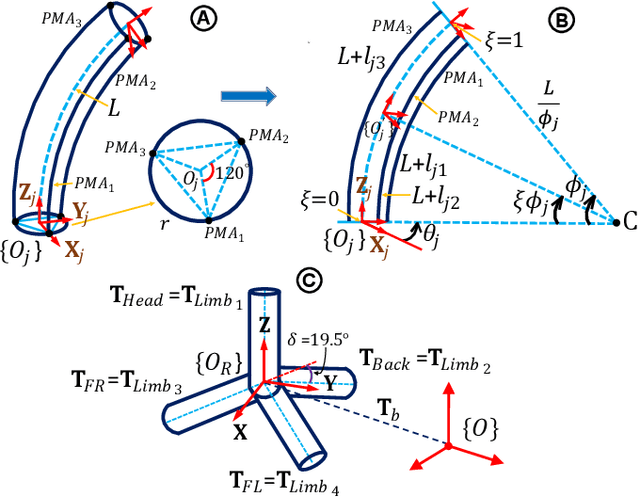
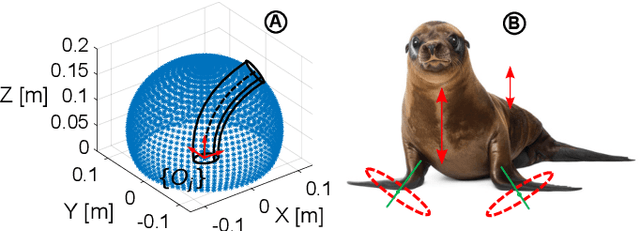
Abstract:Legged locomotion is a highly promising but under-researched subfield within the field of soft robotics. The compliant limbs of soft-limbed robots offer numerous benefits, including the ability to regulate impacts, tolerate falls, and navigate through tight spaces. These robots have the potential to be used for various applications, such as search and rescue, inspection, surveillance, and more. The state-of-the-art still faces many challenges, including limited degrees of freedom, a lack of diversity in gait trajectories, insufficient limb dexterity, and limited payload capabilities. To address these challenges, we develop a modular soft-limbed robot that can mimic the locomotion of pinnipeds. By using a modular design approach, we aim to create a robot that has improved degrees of freedom, gait trajectory diversity, limb dexterity, and payload capabilities. We derive a complete floating-base kinematic model of the proposed robot and use it to generate and experimentally validate a variety of locomotion gaits. Results show that the proposed robot is capable of replicating these gaits effectively. We compare the locomotion trajectories under different gait parameters against our modeling results to demonstrate the validity of our proposed gait models.
Teleoperation of Soft Modular Robots: Study on Real-time Stability and Gait Control
Mar 09, 2023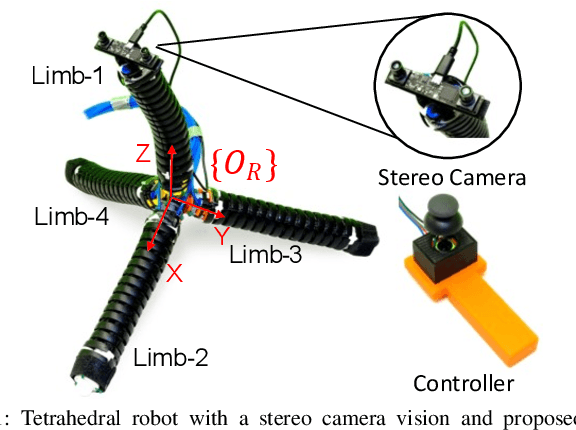
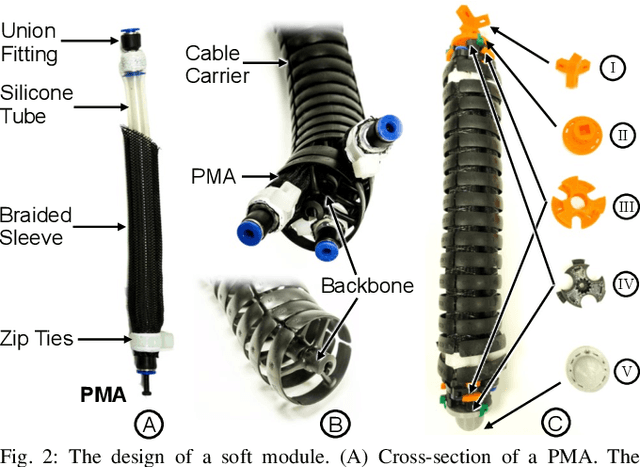
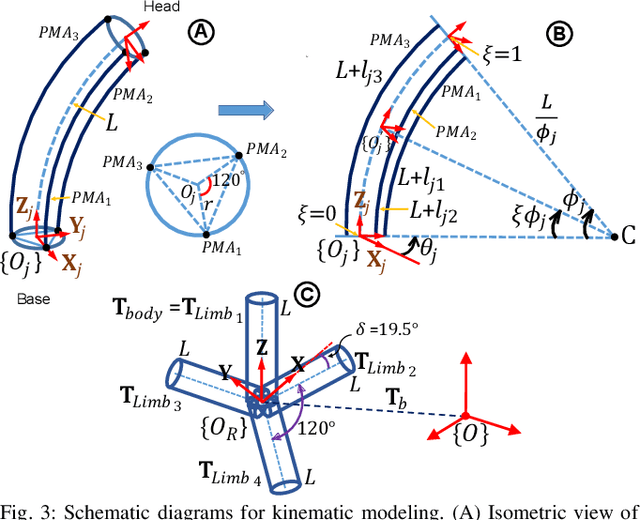
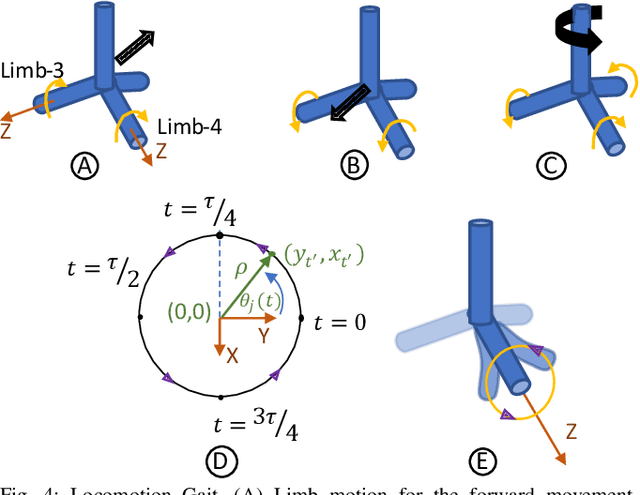
Abstract:Soft robotics holds tremendous potential for various applications, especially in unstructured environments such as search and rescue operations. However, the lack of autonomy and teleoperability, limited capabilities, absence of gait diversity and real-time control, and onboard sensors to sense the surroundings are some of the common issues with soft-limbed robots. To overcome these limitations, we propose a spatially symmetric, topologically-stable, soft-limbed tetrahedral robot that can perform multiple locomotion gaits. We introduce a kinematic model, derive locomotion trajectories for different gaits, and design a teleoperation mechanism to enable real-time human-robot collaboration. We use the kinematic model to map teleoperation inputs and ensure smooth transitions between gaits. Additionally, we leverage the passive compliance and natural stability of the robot for toppling and obstacle navigation. Through experimental tests, we demonstrate the robot's ability to tackle various locomotion challenges, adapt to different situations, and navigate obstructed environments via teleoperation.
Wheelless Soft Robotic Snake Locomotion: Study on Sidewinding and Helical Rolling Gaits
Mar 04, 2023Abstract:Soft robotic snakes (SRSs) have a unique combination of continuous and compliant properties that allow them to imitate the complex movements of biological snakes. Despite the previous attempts to develop SRSs, many have been limited to planar movements or use wheels to achieve locomotion, which restricts their ability to imitate the full range of biological snake movements. We propose a new design for the SRSs that is wheelless and powered by pneumatics, relying solely on spatial bending to achieve its movements. We derive a kinematic model of the proposed SRS and utilize it to achieve two snake locomotion trajectories, namely sidewinding and helical rolling. These movements are experimentally evaluated under different gait parameters on our SRS prototype. The results demonstrate that the SRS can successfully mimic the proposed spatial locomotion trajectories. This is a significant improvement over the previous designs, which were either limited to planar movements or relied on wheels for locomotion. The ability of the SRS to effectively mimic the complex movements of biological snakes opens up new possibilities for its use in various applications.
Dynamic Modeling and Validation of Soft Robotic Snake Locomotion
Mar 04, 2023Abstract:Soft robotic snakes made of compliant materials can continuously deform their bodies and, therefore, mimic the biological snakes' flexible and agile locomotion gaits better than their rigid-bodied counterparts. Without wheel support, to date, soft robotic snakes are limited to emulating planar locomotion gaits, which are derived via kinematic modeling and tested on robotic prototypes. Given that the snake locomotion results from the reaction forces due to the distributed contact between their skin and the ground, it is essential to investigate the locomotion gaits through efficient dynamic models capable of accommodating distributed contact forces. We present a complete spatial dynamic model that utilizes a floating-base kinematic model with distributed contact dynamics for a pneumatically powered soft robotic snake. We numerically evaluate the feasibility of the planar and spatial rolling gaits utilizing the proposed model and experimentally validate the corresponding locomotion gait trajectories on a soft robotic snake prototype. We qualitatively and quantitatively compare the numerical and experimental results which confirm the validity of the proposed dynamic model.
Dynamic Control of Soft Robotic Arm: An Experimental Study
Sep 22, 2022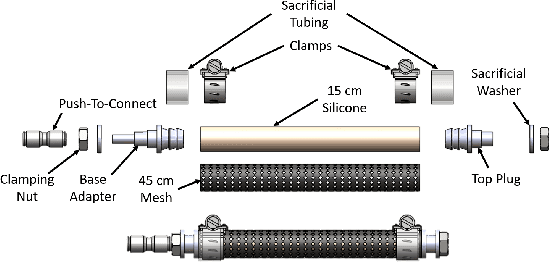
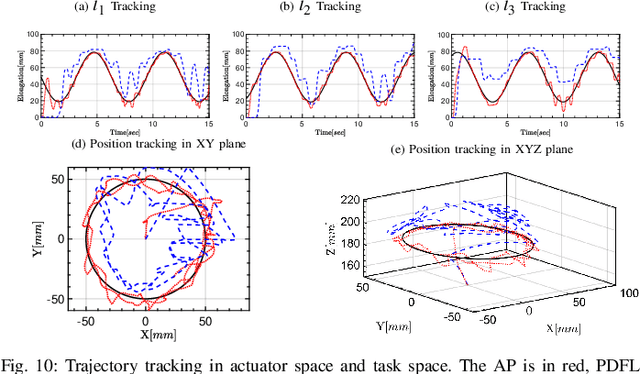
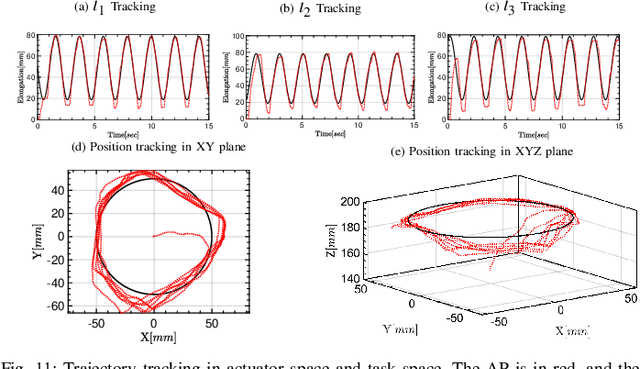
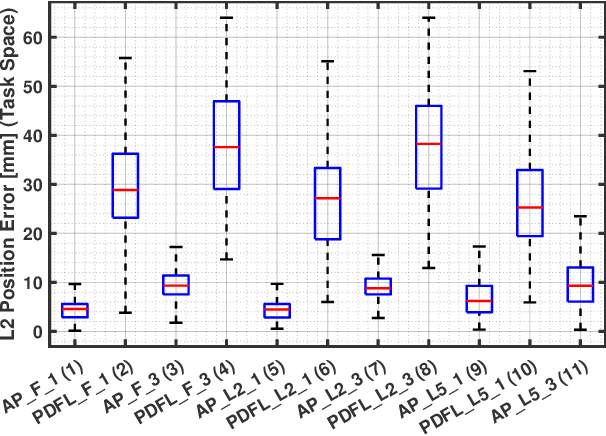
Abstract:In this paper, a reinforced soft robot prototype with a custom-designed actuator-space string encoder are created to investigate dynamic soft robotic trajectory tracking. The soft robot prototype embedded with the proposed adaptive passivity control and efficient dynamic model make the challenging trajectory tracking tasks possible. We focus on the exploration of tracking accuracy as well as the full potential of the proposed control strategy by performing experimental validations at different operation scenarios: various tracking speed and external disturbance. In all experimental scenarios, the proposed adaptive passivity control outperforms the conventional PD feedback linearization control. The experimental analysis details the advantage and shortcoming of the proposed approach, and points out the next steps for future soft robot dynamic control.
Hybrid Soft Robots Incorporating Soft and Stiff Elements
Feb 14, 2022


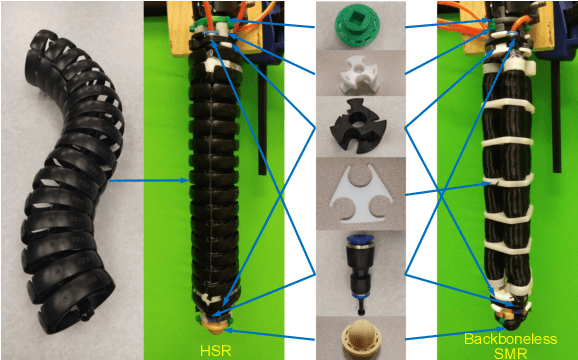
Abstract:Soft robots are inherently compliant and have a strong potential to realize human-friendly and safe robots. Despite continued research highlighting the potential of soft robots, they remain largely confined to laboratory settings. In this work, inspired by spider monkeys' tails, we propose a hybrid soft robot (HSR) design. We detail the design objectives and methodology to improve the controllable stiffness range and achieve independent stiffness and shape control. We extend the curve parametric approach to We experimentally demonstrate that the proposed HSR has about a 100% stiffness range increase than a previous soft robot design with identical physical dimensions. In addition, we empirically map HSR's bending shape-pressure-stiffness and present an application example - a soft robotic gripper - to demonstrate the decoupled nature of stiffness and shape variations. Experimental results show that proposed HSR can be successfully used in applications where independent stiffness and shape control is desired.
Dynamic Control of Soft Robotic Arm
Oct 11, 2021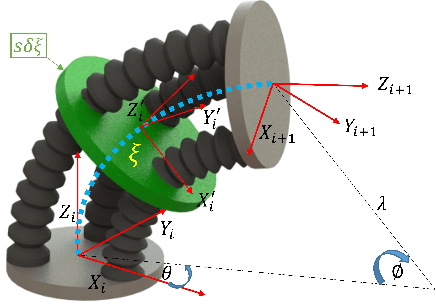
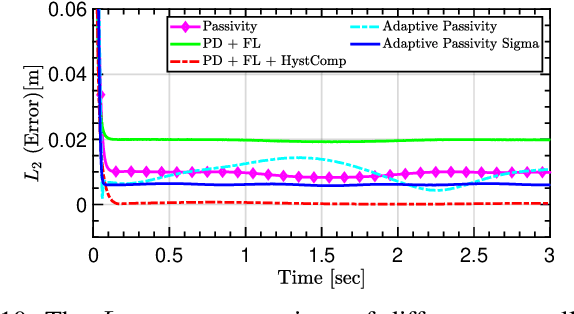
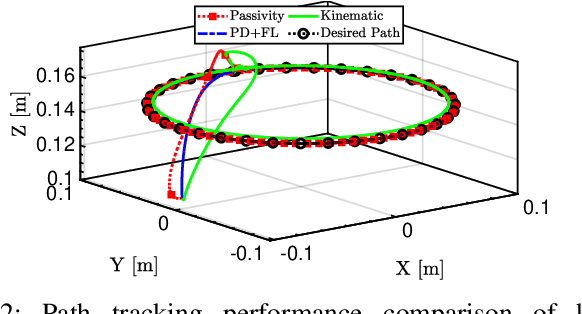
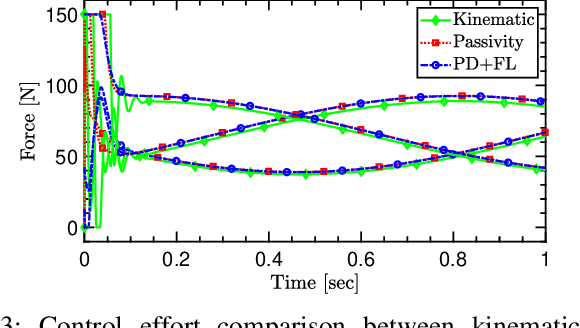
Abstract:In this article, the control problem of one section pneumatically actuated soft robotic arm is investigated in detail. To date, extensive prior work has been done in soft robotics kinematics and dynamics modeling. Proper controller designs can complement the modeling part since they are able to compensate other effects that have not been considered in the modeling, such as the model uncertainties, system parameter identification error, hysteresis, etc. In this paper, we explored different control approaches (kinematic control, PD+feedback linearization, passivity control, adaptive passivity control) and summarized the advantages and disadvantages of each controller. We further investigated the robot control problem in the practical scenarios when the sensor noise exists, actuator velocity measurement is not available, and the hysteresis effect is non-neglectable. Our simulation results indicated that the adaptive passivity control with sigma modification terms, along with a high-gain observer presents a better performance in comparison with other approaches. Although this paper mainly presented the simulation results of various controllers, the work will pave the way for practical implementation of soft robot control.
Modeling and Validation of Soft Robotic Snake Locomotion
Oct 22, 2020



Abstract:Snakes are a remarkable evolutionary success story. Many snake-inspired robots have been proposed over the years. Soft robotic snakes (SRS) with their continuous and smooth bending capability better mimic their biological counterparts' unique characteristics. Prior SRSs are limited to planar operation with a limited number of planar gaits. We propose a novel SRS with spatial bending and investigate snake locomotion gaits beyond the capabilities of the state-of-the-art systems. We derive a complete floating-base kinematic model of the robot and use the model to derive jointspace trajectories for serpentine and inward/outward rolling locomotion gaits. The locomotion gaits for the proposed SRS are experimentally validated under varying frequency and amplitude of gait cycles. The results qualitatively and quantitatively validate the SRS ability to leverage spatial bending to achieve locomotion gaits not possible with current SRS.
A Novel Variable Stiffness Soft Robotic Gripper
Oct 22, 2020



Abstract:We propose a novel tri-fingered soft robotic gripper with decoupled stiffness and shape control capability for performing adaptive grasping with minimum system complexity. The proposed soft fingers adaptively conform to object shapes facilitating the handling of objects of different types, shapes, and sizes. Each soft gripper finger has an inextensible articulable backbone and is actuated by pneumatic muscles. We derive a kinematic model of the gripper and use an empirical approach to map input pressures to stiffness and bending deformation of fingers. We use these mappings to achieve decoupled stiffness and shape control. We conduct tests to quantify the ability to hold objects as the gripper changes orientation, the ability to maintain the grasping status as the gripper moves, and the amount of force required to release the object from the gripped fingers, respectively. The results validate the proposed gripper's performance and show how stiffness control can improve the grasping quality.
Swimming locomotion of Soft Robotic Snakes
Aug 14, 2019


Abstract:Bioinspired snake robotics has been a highly active area of research over the years and resulted in many prototypes. Much of these prototypes takes the form of serially jointed-rigid bodies. The emergence of soft robotics contributed to a new type of snake robots made from compliant and structurally deformable modules. Leveraging the controllable large bending, these robots can naturally generate various snake locomotion gaits. Here, we investigate the swimming locomotion of soft robotic snakes. A numerically efficient dynamic model of the robot is first derived. Then, a distributed contact modal is augmented to incorporate hydrodynamic forces. The model is then numerically tested to identify the optimal bending propagation for efficient swimming. Results show that the soft robotic snakes have high potential to be used in marine applications.
 Add to Chrome
Add to Chrome Add to Firefox
Add to Firefox Add to Edge
Add to Edge